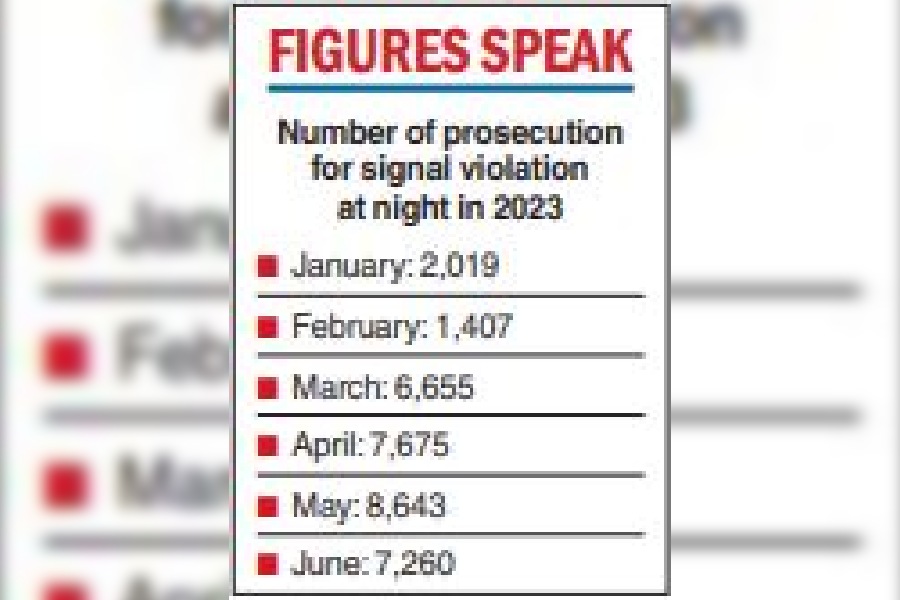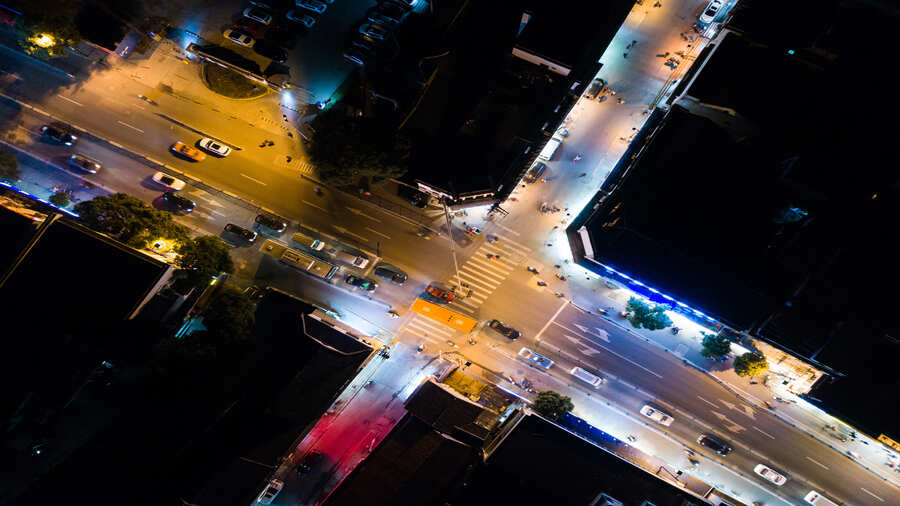More than 5,500 motorists are prosecuted every month for violating traffic signals and the stop-line rule in the city between midnight and 6am, the period when the number of vehicles on the roads is minimal.
This is an official figure from Kolkata police.
The real number of violations would be way beyond that, showing how dangerous Kolkata’s roads are late at night.
According to Kolkata police records, more than 33,659 motorists have been prosecuted for jumping signal and violating the stop-line rule (stopping at a signal after crossing the stop line) between midnight and 6am since January 1.

The Telegraph sought the corresponding figure from the Bidhannagar Police Commissionerate, but the police district failed to provide that. Officers at the commissionerate said they do not have the night prosecution figures separately.
As for the total figure, including night prosecutions, 18,209 traffic signal-related violations were reported between January and May in the Bidhannagar commissionerate area.
Last month, four people in a car waiting at a red light at the Lake Town crossing on VIP Road were smashed by a bus from behind, killing all four people in the four-wheeler, including the driver.
The police had said the bus, which had allegedly been stolen, breached at-least two traffic signals before hitting the car and was in a rush to flee a chasing cop squad.
The crash happened around 3am.
In June last year, New Alipore resident Minu Dhandhania died when a Mercedes Benz smashed her car from behind while she and her family were waiting in their car at a red signal on EM Bypass near Beleghata.
In Kolkata, around a third of the accidents recorded are reported late at night when the roads are mostly empty and the tendency to violate traffic signals is high, the police said.
The majority of the accidents at night happen because of speeding, drink driving and the tendency to ignore rules, said an assistant commissioner in Kolkata police.
“Most motorists think as there are fewer police personnel on the roads, they can get away with violations. But they do not realise that violations are noted through cameras and prosecution proceedings are initiated.”
Cameras to detect signal violations are installed at most major traffic intersections. The cameras are connected with automatic number plate recognition devices, which capture the registration number of the offending vehicles.
“Once a violation is detected, an e-challan is generated and sent to the registered mobile number of the owner of the errant car or two-wheeler,” the officer said.
However, not all intersections have such cameras.
Figures available with Kolkata police point at a gradual increase in the number of prosecutions for traffic signal-related offences at night from February.
“Earlier, the police stations in the city were responsible for regulating traffic at night. Now, each traffic guard has at least two traffic sergeants on night shift. But manual citation is not always possible at night (because of too few cops on roads). Hence we depend on cameras,” said another officer in the traffic department at Lalbazar.
A senior officer in the Bidhannagar police said they were taking several “traffic calming measures” to prevent accidents and traffic violations at night.
“We are also identifying pockets that are prone to accidents and ensuring 24/7 vigil at those points to prevent accidents and violations,” said an officer.
